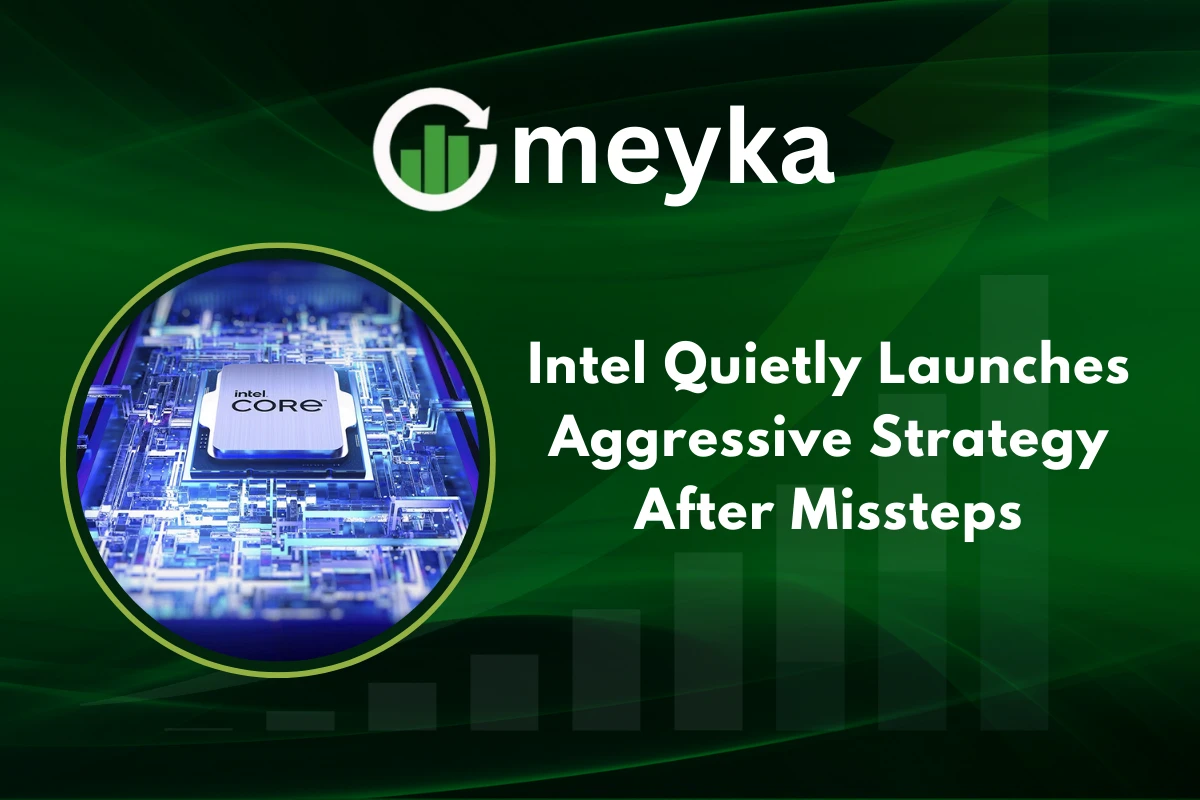Intel Quietly Launches Aggressive Strategy After Missteps
Intel is moving fast, but quietly. After a stretch of missed targets and rising competition, the company has rolled out an aggressive recovery push. Intel leaders are doubling down on a turnaround plan launched earlier this year. The move aims to fix manufacturing issues, speed product rollouts, and shore up investor confidence.
Intel missteps and why the company needed to act
Intel’s problems did not happen overnight. Industry observers point to delays in new process nodes, disappointing product timing, and fierce competition from rivals. These issues cost Intel market share in key markets like CPUs for PCs and servers. Many investors grew impatient, and the stock’s performance reflected that pressure. Those strains forced Intel to change course and act more boldly.
What went wrong
Executives admit that execution slipped on both product roadmaps and manufacturing. When fabs miss targets, supply tightens and customers look elsewhere. That can be costly in chips, where performance leadership and time-to-market matter. Intel’s new strategy is a direct response to those operational gaps.
Why speed matters now
The chip market moves fast. Customers buy on performance and trust that suppliers will deliver. If rivals deliver faster or with better performance-per-dollar, buyers switch. Intel’s urgency reflects a simple fact: regain credibility, or risk further share loss.
Why is Intel making this aggressive move now?
Intel’s recent execution gaps and competitive pressure left the company vulnerable. The aggressive plan is meant to repair those failures, speed up product cycles, and restore investor faith.
Intel aggressive moves to repair recent failures
Intel’s new package of actions is not just PR. The company is tightening management focus, accelerating capital spending where it counts, and prioritizing the chips and fabs that will drive future growth. Leadership is also reworking timelines to show measurable progress sooner rather than later. Analysts call the approach quiet but forceful, aimed at fixing root causes without fanfare.
Operational fixes
The plan emphasizes better fab yields, simplified product platforms, and clearer launch roadmaps. That means more eyes on production metrics and faster troubleshooting cycles. In practice, this can reduce delays and improve product consistency. For customers and partners, that kind of operational discipline is crucial.
Strategic bets
Intel is also leaning into areas with long-term promise: advanced logic, packaging, and certain accelerator chips. These bets aim to diversify revenue and reduce single-product dependency. The company is signaling it will keep investing in manufacturing and design to compete on both scale and performance.
Intel industry and investor reaction
Market watchers noticed the shift. Some investors view the moves as overdue but necessary. Others want to see results before celebrating. Posts on social platforms and short market summaries highlighted the same theme: Intel is trying hard to fix what went wrong, and that effort may justify renewed confidence if it yields results.
What analysts are watching
Analysts will track yield improvements, time-to-market for new nodes, and gross-margin recovery. If Intel can show steady improvement on those items, sentiment could turn. However, investors are wary; many want proof that past missteps won’t be repeated.
Market signals
Shares often move on both news and expectations. Quiet strategic shifts like this can calm some investors, but meaningful rallies typically follow visible progress: better earnings, higher margins, or clear product wins. Intel’s test is to convert strategy into measurable outcomes.
Can Intel regain its leadership in the semiconductor market?
It can, but the path is hard. Success requires reliable manufacturing, competitive chip designs, and smart capital allocation. If Intel executes the plan and shows steady results, a comeback is possible.
Intel competition and the broader chip landscape
Intel now competes with strong rivals. AMD and NVIDIA lead in several growth segments. Foundry players like TSMC set high bars on process technology. That competitive frame shapes Intel’s strategy: win back performance leadership while building flexible manufacturing options. The global chip industry is crowded and capital-intensive; Intel’s plan acknowledges that reality.
Where Intel can win
Intel’s scale and long experience in fabs give it advantages in cost and integration. Its push into advanced packaging and specialized accelerators could open new revenue streams. The company’s challenge is to leverage those strengths without getting pulled into costly distractions. Focus matters.
Global and US context
Semiconductor strategy is also geopolitical. US policy supports domestic manufacturing, and Intel’s moves align with that context. A strong domestic player helps supply chains and national tech resilience.
Intel’s recovery, therefore, has industry and policy relevance beyond quarterly results.
Intel future plans and what to watch next
The proof will be in metrics. Watch for faster ramp times on new nodes, improved yields, and clearer market-share trends in CPUs and accelerators. Investors and customers will also look for consistent guidance from Intel’s leadership and visible progress in factory performance.
If Intel can turn operational discipline into product momentum, the narrative may shift from repair to growth.
Short-term milestones
Expect updates on node yields, product launch schedules, and financial forecasts over the next few quarters. Each data point will test whether the “quiet aggressive” plan is more than words.
Long-term risks
Execution risk, capital intensity, and fierce competition remain. New technical problems or delays could reset expectations. Intel must manage costs while investing in the next wave of chips. Success is far from guaranteed.
Conclusion
Intel’s recent pivot is notable for its tone: quiet but aggressive. The company is not signaling a simple patch. It is directing resources and management focus toward core operational fixes and strategic bets aimed at repairing past failures and restoring confidence.
For the industry, a healthy Intel matters: it keeps competition strong and the global chip supply more robust. The company’s next steps and the data that follow will determine whether this strategy becomes a real comeback or another chapter in a long recovery.
FAQ’S
Intel instability issues can often be fixed by updating BIOS, drivers, and Windows patches. Ensuring proper cooling and stable power supply also helps.
Intel’s P/E ratio changes with market performance. As of 2025, it fluctuates based on earnings reports and stock movement, so investors track it regularly.
Some older Intel processors faced stability issues under heavy loads, but most new-generation chips are tested and optimized for stable performance.
AMD currently leads in performance-per-dollar for gaming and multi-core tasks, while Intel remains strong in efficiency, enterprise solutions, and AI-focused chips.
Yes, Intel has a strong future with its aggressive comeback strategy, new chip architectures, and investments in semiconductor manufacturing.
Nvidia’s P/E ratio is higher than Intel’s, reflecting strong investor confidence in AI and GPU demand, but it also signals a premium valuation.
Intel has faced losses due to delays in chip production, heavy R&D costs, and stiff competition from AMD, Nvidia, and global semiconductor rivals.
Disclaimer
The above information is based on current market data, which is subject to change, and does not constitute financial advice. Always do your research.






